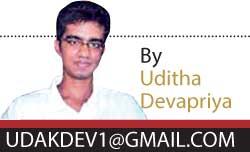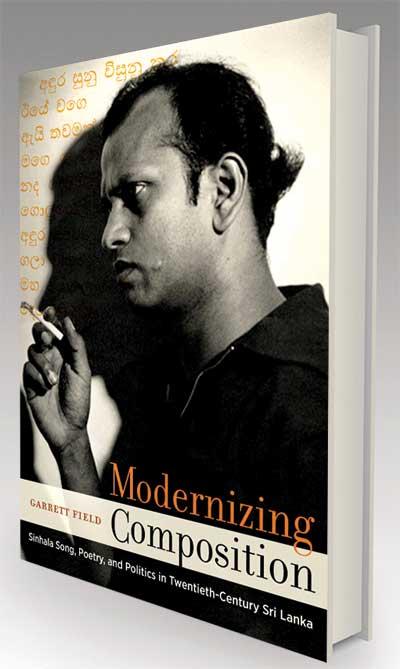Reply To:
Name - Reply Comment
 The Sinhala people do not, strictly speaking, possess a musical tradition of their own. In this they are far away from India. But then the Sinhala villager did spend his time learning, or articulating, verse. Music was, literally, poetry in motion, and there were verses to be performed for different occupations and even times. And quite in contrast to feudal European society, where music remained aristocratic, in Sinhala society it emerged concurrently from the peasant, the monk, and the ruler.
The Sinhala people do not, strictly speaking, possess a musical tradition of their own. In this they are far away from India. But then the Sinhala villager did spend his time learning, or articulating, verse. Music was, literally, poetry in motion, and there were verses to be performed for different occupations and even times. And quite in contrast to feudal European society, where music remained aristocratic, in Sinhala society it emerged concurrently from the peasant, the monk, and the ruler.
We see a decline after the Dambadeniya Period. Torn apart by war, conflict, and factionalism in the Buddhist order, literature floundered. The opening up of the country to foreign forms of architecture and art led to a cultural renaissance that in later years would be described as a Classical Period in Sinhala civilisation. This was seen in the evolution of the language and poetry: having borrowed heavily from the alankarists of Sanskrit India, it sacrificed austerity of expression in favour of a more colourful, superfluous form. Poetic diction was also divorced from common speech, becoming the preserve of aristocratic patronage.
Many contemporary English poets believed that poetry and common speech should not get together: “the language of the age is never the language of poetry,” Gray once contended. (Around this time in Europe, the printing press had already sped up the process of separation between the written and the spoken.) In this they were aligned with Sanskrit poetics: one of the rules of the alankarists was that “the language of the poet should not be that of the uncultivated man of the village.” But it was precisely that uncultivated man who had breathed life to the Sinhala quatrain.
In the Kandyan Kingdom, following a period of Sanskritisation, there were attempts at bringing poetry back to its civilisational roots, but by then thanks to the paradigm shift in poetry effected in the 15th century (when the Sandesha Kawyawas born), literature had become secularised; the rule that poetry should reflect the word of the Buddha (“peden budu sirita”) had been done away with.
Field does not tell us whether this had a bearing on the choice of themes, melodies, and lyrics
All these point at an inscrutable fact: the history of Sinhala poetry was at one level the history of Sinhala music, which evolved rapidly in the 20th century. Garrett Field’s Modernizing Composition, published two years ago by the University of California Press, stands out, I think, as one of the better treatments of this theme.
 In readable and accessible prose that occasionally detours into scholarly jargon, Field examines just how music became so bonded to the written word here. He quite freely admits the inadequacy of Western scholarship when assessing this controversial area. He doesn’t completely dismiss Western paradigms altogether, but rather (and this is the biggest strength of the book) adapts them to the cultural framework within which he has to work. Such an approach is, if not wholly unorthodox, certainly innovative, and it helps us understand the subject of his study.
In readable and accessible prose that occasionally detours into scholarly jargon, Field examines just how music became so bonded to the written word here. He quite freely admits the inadequacy of Western scholarship when assessing this controversial area. He doesn’t completely dismiss Western paradigms altogether, but rather (and this is the biggest strength of the book) adapts them to the cultural framework within which he has to work. Such an approach is, if not wholly unorthodox, certainly innovative, and it helps us understand the subject of his study.
One of the questions we keep on asking ourselves, as we go through Field’s work, is whether the revivalists of the early 20th century were truly motivated by nationalistic impulses in what they were doing. Was John de Silva, and before him C. Don Bastian, spurred on by popular opposition to British colonialism? Field, wisely, does not pass a judgement (as many would have done); instead he suggests that in one way they were, and in another they were not: there was a cultural revival clearly at odds with imperial interests, yet there was also a “commodification” of that revival. It rallied the middle class against imperialism, but it didn’t channel their discontent against colonialism the way it had in the rest of the subcontinent.
My view is that the cultural revival of the period closely mirrored the religious (Buddhist) revival of the previous century. Like all scholars who’ve engaged with this topic, Field discerns in that movement the seeds of bigotry that would erupt in 1956: linguistic revival, for him, is what led to the Sinhala mob attacks against the Tamils (a simplification which undermines the scholarliness of the rest of the book). While one can’t draw a distinction between the religious and cultural content of the revival, it’s hence clear that the religious content did precede its transformation into the petty bourgeois cultural artefacts of the early 20th century.
In his book Buddhism in Sinhalese Society, Kithsiri Malalgoda points out that the Buddhist revival of the 19th century was marred by certain paradoxes: for instance, lay people were appointed as heads of Buddhist schools when Buddhist monks were seen as the only custodians of such institutions. There was a definitive urban bias, and that, Malalgoda suggests, was what led to the distancing of the movement from the radicals who idealised a Sinhala Buddhist state. In the end a new class, intermediate, bilingual, at odds with the colonial order, emerged. They were small time merchants who suffered from economic exploitation, yet couldn’t do much about it; many of them would later rally behind S. W. R. D. Bandaranaike.
Field does not tell us whether this had a bearing on the choice of themes, melodies, and lyrics that John de Silva’s and C. Don Bastian’s hybrid theatre went for, but he does imply that the paradoxes of the Buddhist revival were found there. While the Nurti plays did caricature the Westernised elite (Sinhala Parabhawa Natakaya) and lament the downfall of the Sinhala race (Sri Wickrama Rajasinghe), even to the extent of demonising minority groups (though there were non-Buddhists who donated to de Silva), not only were these derivative of a foreign theatre form (the Parsee), they were also reflective of a stunted petty bourgeoisie that, in the absence of a proper means by which they could attack British economic interests, used hybridised art forms to, at most, threaten sedition and glamourise the past. They identified strongly with the anti-colonialist content of these “stirring Sinhalese plays” – Kumari Jayawardena in her biography of A. P. de Zoysa writes of an instance where two drunken soldiers jumped on stage at the Tower Hall and assaulted the actor playing Sri Wickrama Rajasinghe for having “ordered” the killing of Eheliyapola’s wife and children.
The opening up of the country to foreign forms of architecture and art led to a cultural renaissance that in later years would be described as a Classical Period in Sinhala civilisation. This was seen in the evolution of the language and poetry: having borrowed heavily from the alankarists of Sanskrit India
The author goes on to argue that de Silva was as much a nationalist as he was a capitalist, like the later gramophone record pioneers; on the other hand Ediweera Sarachchandra, in an article written to the Lanka Guardian in 1979, describes him as a “sincere nationalist” much like Piyadasa Sirisena, another celebrated figure of the urban Sinhala Buddhist petty bourgeoisie.
To Field’s credit, he does not engage in pasting labels on the people he discusses – for the most, that is. His account of this period, i.e. between the nurti plays of John de Silva and the Elu Sinhala campaigns of the Hela Havula to the Victorian-styled poets of the 1940s and the bilingual poets of the fifties (alternating between Westernised scions such as Siri Gunasinghe and

radical purists such as Gunadasa Amarasekara), is therefore the best portion of the book.
Unfortunately, he does not sustain this all-encompassing catholic vision and tenor in the last few chapters. His account of Mahagama Sekara is muddled up to say the least, and on the basis of his convictions he “periodises” the career of that most prodigious artist of the 20th century: to put it simply, the author suggests, and we beg to differ, that Sekara gradually turned from the “illusions” of Sinhala Buddhism to the “disillusions” of a “multi-ethnic utopia” in the early sixties.
He tries hard to sustain this image of Sekara, and jumbles up his chronology: the period in which, according to the author, Sekara turned from an apolitical glorifier of traditional society (Vyanga) to a humanist critic of the capitalist system (Maknisada Yat) was the same period in which he was writing “Me Sinhala Apage Ratayi”. It’s only to be expected that the author does not, even in passing, refer to this song; if he had, the contradiction in his chronology would have shown.
But then there’s only one section on Sekara, the only chapter that contains that flaw. In every other respect, Modernizing Composition is a book that deserves to be read. It incorporates some of the analyses that Sinhalese authorities like Sunil Ariyaratne have written down, and it carries forward those analyses beyond the parameters of Western scholarship. Field is to be commended there: he spent years and years learning and mastering Sinhala so to be able to assess the Sinhala lyric that way. We hence need to return the favour: we need to buy the book, and go through it.
NB: Field does not discuss what transpired in the musical sphere of the country after the sixties, so there’s no mention, say, of Clarence Wijewardena, Premasiri Khemadasa, Somadasa Elvitigala, etc. One hopes that a scholar of Field’s ability, or for that matter Field himself, will step in to fill the gap.